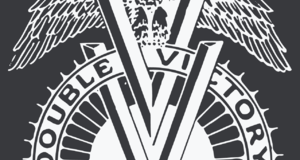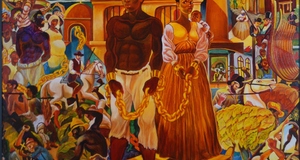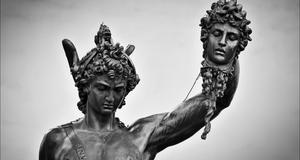The Development of the Printing Press and the Decline of the Chronicle as Historical Method
By
2015, Vol. 7 No. 06 | pg. 1/2 | »
KEYWORDS:
In his work The Idea of History, philosopher and historian Robin Collingwood outlines the development of historiography by leading his audience on a European cross-continental journey through time. He identifies the early modern period as a point at which there was a distinct change in historical writing. The Renaissance historians of this period brought about “a fresh reorientation of historical studies,” which manifested itself in a more narrative style of writing. The chronicles favored by medieval historians began to sharply decline.1 Collingwood, along with other historians,2 3 attributes this drastic change primarily to the development of humanism. However, I argue that the declining use of the chronicle as historical method was directly related to the ongoing development and proliferation of the the printing press. The chronicles of the middle ages were successive lists of events, which reflected a belief that the only causal agent in history is God. There was no need to relate events together, as God, not human action, ordered events.4 The chronicle form served this belief well, as the listings created a perception that these were separate occurrences controlled by nothing but divine providence. The chroniclers recorded events based on tradition, and the evidence they used was predominantly oral testimony and eyewitness accounts. There was no systematic method with which to criticize and analyze the tradition or presented evidence, rather both were generally accepted as fact by the chroniclers.5 As these chronicles were simply continuing the tradition that came before them, chroniclers commonly wrote only on the most recent past, as earlier chroniclers had already recorded the more distant past, and the accuracy of their recording was not to be questioned.6 Throughout the sixteenth century, historians began to diverge from these medieval methods of historical writing.By the end of the sixteenth century, Renaissance historians began to record events as centered around human action, thus allowing humans to be considered historical agents. Humans, who had previously been recorded as a name on list in the chronicles, became characters who made decisions that shaped the cause of events.7 With the focus on humans, history became a medium through which one could learn lessons from the past, as the past was no longer solely in the control of the divine hand.8 Scholarship became very important – with a new interest in the accuracy of facts, historians began to develop a scientific and systematic method of criticism and analysis for sources and evidence. With this “reorientation of historical studies,” historians were no longer confined to the recent past, accepting tradition as tradition; rather they pulled sources together in order to rediscover the remote past.9 As these changes took hold, historians broke away from the chronicle, leading to its decline. It is understandable that historians would attribute the reason for this historiographical change to the humanism that appeared within Renaissance culture. With a return to the classics, it makes sense that Renaissance historians would challenge traditional religious beliefs, which, when combined with rationalismof ancient writing and the new focus on the individual, would lead to turning humans into causal agents. With the resolve that human beings could determine for themselves truth and falsehood, it is reasonable that historians would ask new questions about the validity of tradition and evidence, both giving reason to gather various sources and rediscover the past. Although there is a close alignment of the tenets of Renaissance humanism with these historiographical changes, the technological advancements that allowed for this cultural shift should not be overlooked. The shift to humanist thinking that came about with the Renaissance was directly tied with the advent of the printing press, explains historian Elizabeth Eisenstein in her book, The Printing Revolution in Early Modern Europe. Without the printing press, the ideas of the Renaissance would not have taken hold, like the classical revivals before the fifteenth century that had not succeeded.10 These previous revivals were fruitless because manuscripts limited access to and fixity of classical texts. The technological shift to print culture created “typographical fixity" while enabled classical texts to penetrate cultural thought.11 The power of the printing press to make abundant copies of classical texts ensured that these texts would become more available, and never lost, as had been one of the limitations of manuscripts. Additionally, scholars could now compare printed copies of these texts, correct the errors and create a permanent and correct version of the classical text. These texts could be abundantly distributed because of the printing press, and scholars could study these texts and use them to further develop and spread humanist ideas. Thus, without the printing press, the shift to humanist thinking would have flickered out just like earlier classical revivals. The humanist idea of the power of the human being was one that the printing press allowed to reenter society. One of the main classical figures to espouse this idea, and whose works became central to Renaissance thinkers, was Cicero. In his treatise The Republic and The Laws, Cicero writes regarding the importance of human reason, he explains “reason in fact -- the one thing in which we are superior to the beasts, which enables us to make valid deductions, to argue, refute opponents, debate, solve problems, draw conclusions -- that certainly is common to all of us."12 The immense power of human reason is a central idea in this text, and the power of human action as a result of the ability to reason appears in his treatise, On the Nature of The Gods. Even with his focus on the power of the divine, he introduces his treatise with the idea of the power of human action: Then think of the human race, who have been appointed, as it were, to be the gardeners of the earth, who will not permit it to become a savage haunt of monstrous beasts or a wilderness of thorny scrub. Under their hands, the lands, the islands and the shores shine out, decked with their buildings and their cities.13 As “gardeners of the earth,” humans, endowed with reason, take actions that affect the earth that is “under their hands.” This idea - the power of human decision making - was lost in the medieval period, yet was revived in the Renaissance. Without the abundance and fixed form of Cicero’s classical texts that the printing press created, the classical idea of the centrality of humans would have remained lost in the past. The permanent revival of the idea of human reason is just one example of why Eisenstein refers to print culture as “the most radical transformation in the conditions of intellectual life in the history of Western civilization.”14 It was the access to these classical ideas, in this case, the centrality of the human, which allowed them to shape humanist thought. When historians began to write history as centered around the decisions of human, this reflected the humanist conception of human reason and action. The printing press, and the “typographical fixity” it created for Cicero’s texts, thus provided a critical underlying foundation for the switch from divine agency to human agency in historical writing. In addition to the specific texts to which the printing press created access, the printing press was also an underlying factor in the newfound importance of accurate scholarship. This came about both from the access to many texts and the humanist focus on fact and falsehood. Print made possible the reproduction of many copies of many different texts. While manuscripts previously had very limited access, as they were kept locked away in the scriptoria, the advent of the printing press moved manuscripts into private libraries, abbey libraries, scriveners’ shops and noble and gentry collections.15 With the ability to access these manuscripts and public archives of government documents and other printed texts, historians began to gain access to them.16 The access to so many resources spurred historians and scholars to look for different copies of works, thereby ensuring that their information was accurate and verified. Before public access to manuscripts, and the creation of public government archives, the only way to verify the information in a source was tradition. William Camden, a sixteenth century English historian influenced by the pan-European Renaissance, exemplified the kind of historian who created their histories out of careful research of various sources. In order to write an accurate historical presentation of Queen Elizabeth’s reign, Camden searched through state papers, diplomatic dispatches, legal records and Parliamentary proceedings that were made available through public archives. 17 These kinds of public archives would not have been available to him, nor would have held the amount of public records, in the age before print. While Camden traveled across England to find the documents and manuscripts he needed, he also began to build up his own private library to have more access to manuscripts. Camden’s works overtly reflected that his facts were not based on tradition, but on government and other records. This is seen in the great detail of his writing, for example, when he reports the exact numbers of soldiers, sailors and slaves upon each English ship that fought against the Spanish Armada.18 Before the age of print, this access to written documentation did not exist, and thus had no place in historical writing. With the movement of texts out of the monasteries and into the accessibility of the public, historians began to use them instead of tradition and oral testimony. The access to many written documents created an attitude of doubt toward oral testimony. With the accumulation and correction of accurate texts, the veracity of chronicles, steeped in the “evidence” of tradition, was called into question. Renaissance historians began to problematize eyewitness accounts, considering if a report from an eyewitness could actually be true. They began to view oral reports as completely subjective as oral addresses mainly served to manipulate existing feelings, whether hatred, fear, latent antagonism, or unlimited support. Indeed, imagination, rhetoric, manipulation, idioms, stereotypes and the whole spectrum of human emotions were all encapsulated in the oral reports included in medieval chronicles.19 With this attitude toward oral testimony, historians found the evidence of tradition in medieval chronicles to be problematic, and looked to develop a methodological way to analyze and critically look at sources. This methodology was based on the now developed idea that “something written in a document or an inscription rather than reported by a secondary source,” was the most accurate type of evidence.20 Thus the access to written documents as spurred by the printing press distinctly changed historians’ ideas of what is historical fact. With both the movement of written documents out of the monasteries, and the questioning of oral testimony, empiricism became critical to Renaissance historiography. Accordingly, the development of this scientific and systematic method of criticism and analysis of sources and evidence, which diverged completely from the method of writing chronicles, was stimulated by the printing press. The change in writing about the distant past instead of only the recent past was also spurred by the printing press. English historian D. R Woolf writes about what led to this stark change, and the ultimate death of the chronicle, in his book Reading History in Early Modern England. He writes that, at first, the coming of the printing press at the end of the fifteenth century to England amplified the dissemination of chronicles. This widespread dissemination made chronicles very popular, and printers began to print all sorts of chronicles, from Saint Bede the Venerable’s An Ecclesiastical History of the English People, written in 731, to Robert Fabyan’s The new chronicles of England and France, written in 1516. The printing press thus made the chronicle more accessible and more popular than ever before in England.21 While the printing press gave the chronicle its popularity, it also began to lead it to its death, or what Woolf refers to as its “genrecide.” By making the facts of the past common knowledge, it allowed for the development of other types of historical genres, which were sourced in the chronicles, but were much easier and cheaper to print. Each of these new genres served different functions that had been all encompassed in the chronicle. Almanacs became very popular, and took on the chronicle’s function of presenting information to the public. In terms of communication of news, newsbooks, diurnals, and newspapers began to take on that function. Diaries, biographies and autobiographies took on the role of commemorating great events and preserving documents, while historical drama, verse and prose fiction functioned as entertainment for readers. Thus, all of the functions of chronicle - presentation of information, communication, commemoration, preservation and entertainment - dissolved into smaller, cheaper forms.22Continued on Next Page » Suggested Reading from Inquiries Journal
Inquiries Journal provides undergraduate and graduate students around the world a platform for the wide dissemination of academic work over a range of core disciplines. Representing the work of students from hundreds of institutions around the globe, Inquiries Journal's large database of academic articles is completely free. Learn more | Blog | Submit Latest in History |


















